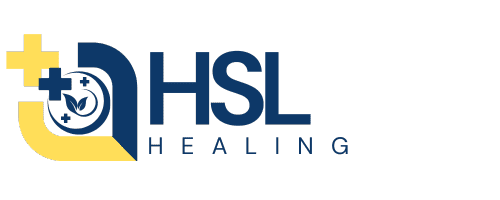Hypertension, or high blood pressure, affects over 1.28 billion people worldwide, according to the World Health Organization (WHO). Left unmanaged, it significantly increases the risk of heart disease, stroke, and kidney failure. While medication and regular checkups are essential for many, lifestyle habits play a critical role in blood pressure control. Starting your day with hypertension-friendly practices can set a positive tone for the hours ahead and contribute to long-term cardiovascular health. This article provides practical, evidence-based steps to create a morning routine that supports healthy blood pressure.
You May Also Like:
Nighttime Hypertension: Why Your Blood Pressure Rises While You Sleep
A Day in the Life of a Hypertension Patient: Living with High Blood Pressure
How to Build a Hypertension-Friendly Morning Routine is an original (HSLHealing) article.
The Importance of Morning Habits in Hypertension Management
Morning routines are a cornerstone of daily health. They set the pace for the day and influence energy levels, mood, and physiological responses like blood pressure regulation. For individuals with hypertension, mornings are an opportunity to engage in activities that reduce stress, improve circulation, and promote overall well-being.
A study in Hypertension Research (2019) found that individuals with consistent, health-focused morning routines had better blood pressure control and reduced variability throughout the day. Building a hypertension-friendly morning routine requires prioritizing practices that address key risk factors such as diet, physical activity, and stress.

1. Start Your Day with Hydration
Hydration is a critical yet often overlooked factor in blood pressure management. Dehydration reduces blood volume and triggers the release of hormones that constrict blood vessels, leading to higher blood pressure.
- Action Step: Begin your morning by drinking a glass of water (8–16 ounces) to rehydrate after sleep. Add a slice of lemon or cucumber for flavor if desired.
- Evidence: A study in The Journal of Clinical Hypertension (2017) found that adequate hydration improved vascular function and reduced systolic blood pressure (SBP) in hypertensive participants.
2. Engage in Morning Exercise
Physical activity is one of the most effective strategies for lowering blood pressure. Exercise strengthens the heart, improves arterial flexibility, and reduces systemic inflammation.
- Best Exercises for Hypertension:
- Walking: A brisk 20–30 minute walk boosts circulation and reduces SBP by 5–7 mmHg, according to a meta-analysis in Hypertension (2020).
- Stretching or Yoga: Activities like yoga improve flexibility and activate the parasympathetic nervous system, promoting relaxation and blood pressure reduction.
- Strength Training: Light resistance exercises improve metabolic health and support long-term cardiovascular fitness.
- Action Step: Incorporate at least 20–30 minutes of moderate exercise into your morning routine. If time is limited, a 10-minute yoga flow or a quick walk around the block can be beneficial.
3. Prioritize a Hypertension-Friendly Breakfast
Breakfast is an essential meal for providing energy and setting the stage for balanced blood pressure throughout the day. A heart-healthy breakfast should include foods rich in potassium, magnesium, and fiber while minimizing sodium.
- Hypertension-Friendly Breakfast Ideas:
- Oatmeal: Top with fresh berries, nuts, and a drizzle of honey for a fiber-rich, nutrient-dense meal.
- Avocado Toast: Use whole-grain bread and add a sprinkle of seeds for added nutrients.
- Smoothie: Blend spinach, banana, almond milk, and a handful of chia seeds for a potassium- and magnesium-packed option.
- Evidence: The DASH (Dietary Approaches to Stop Hypertension) diet emphasizes fruits, vegetables, whole grains, and low-fat dairy, reducing SBP by an average of 11 mmHg, as reported in The New England Journal of Medicine (2017).

4. Practice Mindfulness or Meditation
Stress is a significant contributor to elevated blood pressure. Incorporating mindfulness or meditation into your morning routine can help reduce stress hormones like cortisol and promote relaxation.
- Benefits of Mindfulness:
- Lowers heart rate and blood pressure.
- Reduces sympathetic nervous system activity.
- Improves emotional regulation and focus.
- Action Step: Dedicate 5–10 minutes each morning to mindfulness or meditation. Use guided meditation apps or focus on deep breathing exercises.
- Evidence: A study in Psychosomatic Medicine (2018) found that mindfulness-based stress reduction (MBSR) lowered SBP by 5 mmHg and diastolic blood pressure (DBP) by 3 mmHg in individuals with hypertension.
5. Limit Morning Caffeine Intake
While moderate caffeine consumption is generally safe, excessive intake can temporarily raise blood pressure. This effect is more pronounced in individuals sensitive to caffeine or those who consume large amounts in one sitting.
- Action Step: Limit your morning coffee or tea to one cup and avoid energy drinks or other high-caffeine beverages. Consider switching to decaffeinated options or herbal teas like hibiscus, which has been shown to lower blood pressure.
- Evidence: The Journal of Nutrition (2010) reported that hibiscus tea reduced SBP by 6 mmHg after six weeks of daily consumption.
6. Monitor Your Blood Pressure
Tracking your blood pressure regularly provides valuable insights into your health and the effectiveness of your routine. Morning is an ideal time for measurement, as it reflects baseline levels before daily activities influence readings.
- How to Measure:
- Use an automated home blood pressure monitor.
- Take two readings, one minute apart, and record the average.
- Sit quietly for five minutes before measuring, with your arm supported at heart level.
- Action Step: Incorporate blood pressure monitoring into your morning routine, especially if you are managing hypertension or at risk.
7. Prepare for the Day Ahead
Mornings can be stressful if rushed or disorganized. Taking a few minutes to plan your day can reduce stress and promote a sense of control, both of which benefit blood pressure.
- Action Step: Write a to-do list, prioritize tasks, and include time for breaks or relaxation. Setting intentions for the day can help you stay focused and calm.
- Evidence: A study in Stress and Health (2019) found that structured planning reduced perceived stress and improved blood pressure control in participants with hypertension.

Supplements to Support Morning Health
Certain nutritional supplements can complement a hypertension-friendly morning routine by promoting vascular health and supporting blood pressure regulation.
1. Coenzyme Q10 (CoQ10)
An antioxidant that supports heart function and reduces oxidative stress. A clinical trial in Hypertension Research (2016) found that CoQ10 supplementation reduced SBP by 11 mmHg.
2. Magnesium Glycinate
Magnesium helps relax blood vessels and reduces vascular resistance. A study in Magnesium Research (2014) reported a 5 mmHg reduction in SBP with magnesium supplementation.
3. Beetroot Powder
Rich in nitrates, beetroot improves nitric oxide production, enhancing blood flow and reducing blood pressure. Research in Nutrition Journal (2017) demonstrated a 4 mmHg reduction in SBP after beetroot supplementation.
4. Hibiscus Extract
Hibiscus extract promotes vasodilation and reduces arterial stiffness. The Journal of Nutrition (2010) found a 6 mmHg reduction in SBP with daily hibiscus tea consumption.
5. Omega-3 Fatty Acids
Omega-3s reduce inflammation and improve arterial flexibility. A meta-analysis in Hypertension (2018) reported a 4 mmHg reduction in SBP with omega-3 supplementation.

Creating Consistency: The Key to Success
The effectiveness of a hypertension-friendly morning routine lies in consistency. Small, sustainable changes implemented daily can lead to significant improvements over time. By prioritizing hydration, physical activity, a balanced breakfast, mindfulness, and other healthy habits, you can create a morning routine that not only lowers blood pressure but also enhances overall well-being.
Conclusion
Starting your day with hypertension-friendly habits can have a profound impact on blood pressure control and overall health. From hydration and exercise to mindfulness and balanced nutrition, each step contributes to a holistic approach to managing hypertension. Consistency is key, as these small but meaningful actions, repeated daily, can reduce blood pressure, improve heart health, and foster a sense of well-being. Take charge of your mornings to support your long-term cardiovascular health and set the tone for a healthier life.

References
- Hypertension Research. (2019). The impact of morning routines on blood pressure variability. Hypertension Research. Retrieved from https://www.nature.com/hr
- The New England Journal of Medicine. (2017). DASH diet and blood pressure reduction. The New England Journal of Medicine. Retrieved from https://www.nejm.org
- Psychosomatic Medicine. (2018). Mindfulness-based stress reduction and blood pressure control. Psychosomatic Medicine. Retrieved from https://www.lww.com
- Magnesium Research. (2014). Effects of magnesium on blood pressure. Magnesium Research. Retrieved from https://www.springer.com
- The Journal of Nutrition. (2010). Hibiscus tea and blood pressure reduction. The Journal of Nutrition. Retrieved from https://academic.oup.com
Important Note: The information contained in this article is for general informational purposes only, and should not be construed as health or medical advice, nor is it intended to diagnose, prevent, treat, or cure any disease or health condition. Before embarking on any diet, fitness regimen, or program of nutritional supplementation, it is advisable to consult your healthcare professional in order to determine its safety and probable efficacy in terms of your individual state of health.
Regarding Nutritional Supplements Or Other Non-Prescription Health Products: If any nutritional supplements or other non-prescription health products are mentioned in the foregoing article, any claims or statements made about them have not been evaluated by the U.S. Food and Drug Administration, and such nutritional supplements or other health products are not intended to diagnose, treat, cure, or prevent any disease.

